(Gerry Furth-Sides) Who doesn’t love eating by texture? And both savory South Indian street snacks and Bangladeshi sweets are perfect for this. Crackly, sensuous, intensely seasoned, whimsically shaped, gloriously colorful, Indian snacks are irresistible. They provide the same “snap, crackle and pop” as the iconic American cold cereal, crispy fried chicken, potato chips and onion rings but with a healthy twist on top of it.
Vegetable Pakoras look like festive holiday wreaths in brilliant hues of sunrise-sunset orange. And an array of vegetables is added to the crunchy cousin of the American onion ring.

Thinly sliced red onion, matchstick carrots, potatoes, fennel seed powder, and cilantro are mixed with garbanzo flour (Besan) and water and dropped by random hands full into boiling vegetable oil until golden and crispy. Served with mint chutney for dipping.

Puffy, cloud-like “Puri” at Annapurna’s Southern Indian Vegetarian Restaurant is also atop of the “crunch” list. These clouds of fried unleavened Indian bread could be a “kissing cousin” to an American southern popover.
Crumbly, southern Indian, Idly, (on the left and Vada on the right below) savory little flat cakes, are eaten for breakfast. The spongy cakes are equally as satisfying as savory snacks and are eaten for every meal and snack by Indian college students. Idly are prepared from a rice and urad batter, poured into molds and steamed.
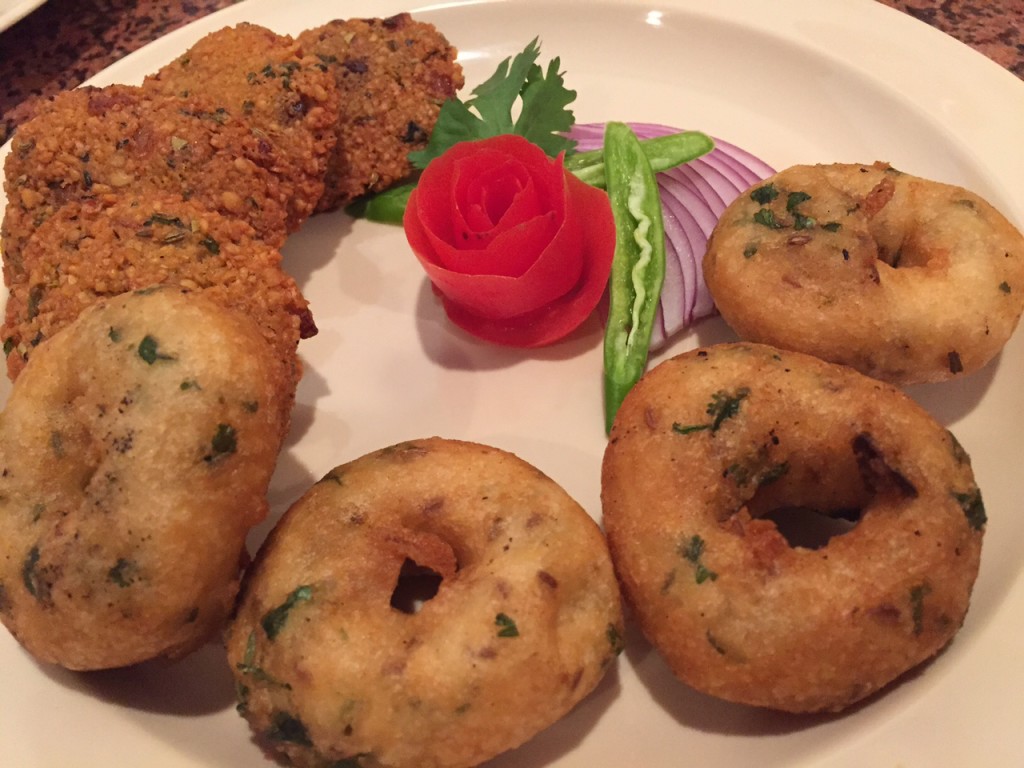
Diners “in the know” prefer Idly soaked in sambar. It lends the little cakes a completely different taste by infusing them with an earthy, hearty, subtle flavor. Sambar is a stewed dish made with toovar (pigeon pea) dal, tamarind, vegetables, and spices.
Another healthy snack, Vada, a savory cousin of the American doughnut, is here soaked in the sambar.
The Rava Dosa crepe adds an unexpected texture to its western counterpart. The crepes, shown above, actually precede the western favorite by centuries.
The crepe, when folded rather than rolled, leads to a softer, less crunchy consistency. For us, as with western crepes, the wonderful taste and purity of the crepe alone are more than enough for a pleasing bite.

Dosas, yet another Indian counterpart to the American “doughnuts” and “crepes” and “popovers” originated in the Udupi subcuisine of South India. The Mysore Masala Dosa adds red hot chutney, affectionately called “gunpowder,” in with the bhaji or spiced potato amalgam). It is named in honor of the second largest city in the Indian state of Karnataka. They provide the perfect bite, somewhere between a snap and a crunch.
Pair the dosas with a contrasting stuffing of cooked spiced onions and peas, or the creamy, herbed mashed potato and green chili mint chutney shown here at Annapurna.
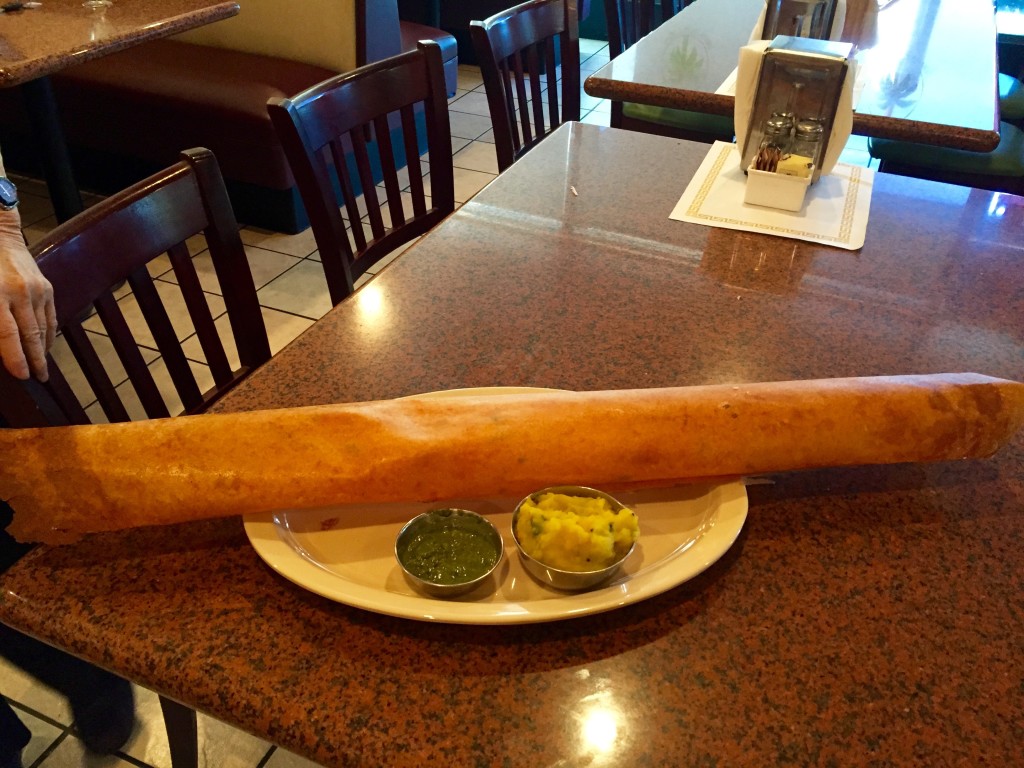
Halwa is a rich dessert prepared with condensed milk and ghee (a sort of clarified butter), which makes it rich, sugary and dense. This dense dessert made of grated carrots cooked in condensed milk and ghee (butter), results in a luxurious, pudding-like confection. So rich and intensely sugary, one dessert can be shared by four. Carrot, beet, white pumpkin and wheat with a garnish of pistachios are popular flavors, shown below.
Bengali Sweets from a sweet boy back from a trip to Bangladesh
Balushahi is a traditional dessert made with ghee, sugar and maida flour. This sweet was made famous in Harnaut of South Bihar in northern India just west of Bangladesh and south of Nepal.
Sandesh is a Bengali dessert created with milk and sugar. A softer kind of Sandesh is prepared with mawa and the essence of curd and has an emotional hold on diners. People in the region of Dhaka actually call it pranahara (literally, heart ‘stealer’) – a well-deserved name for the dense, just sweet enough snack.

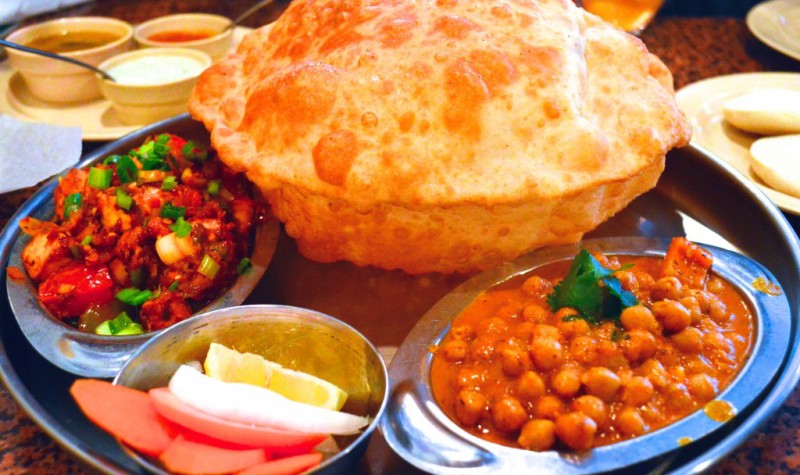
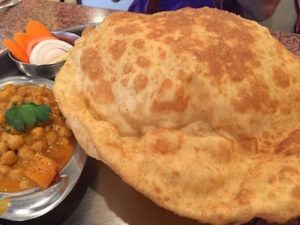
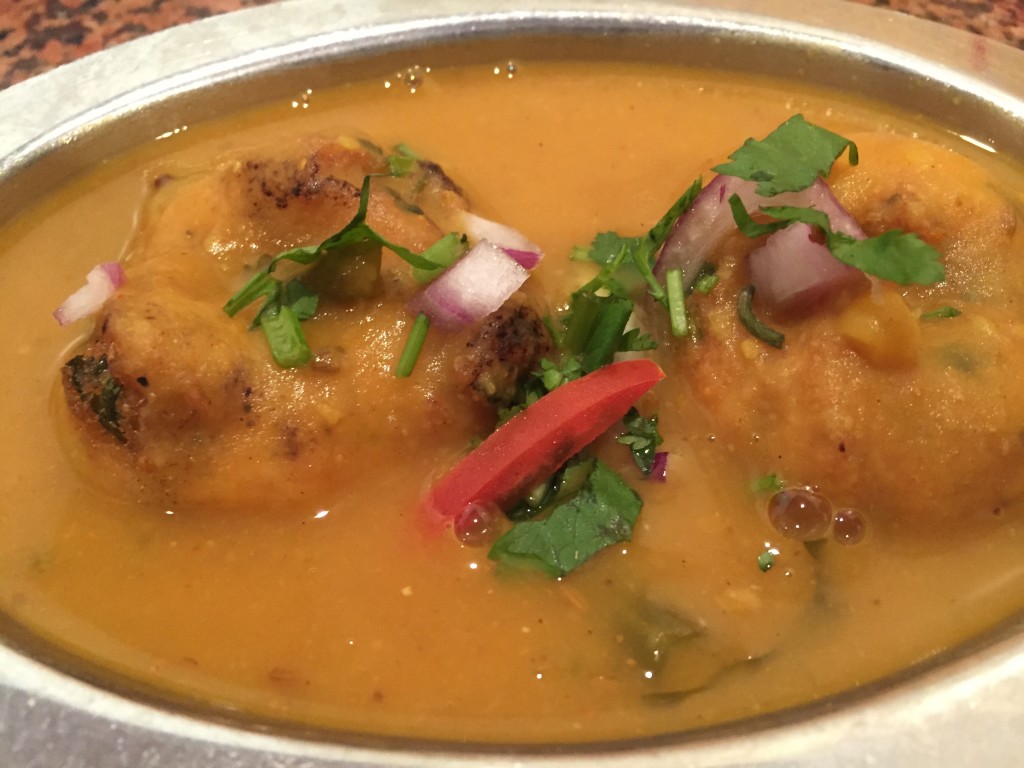
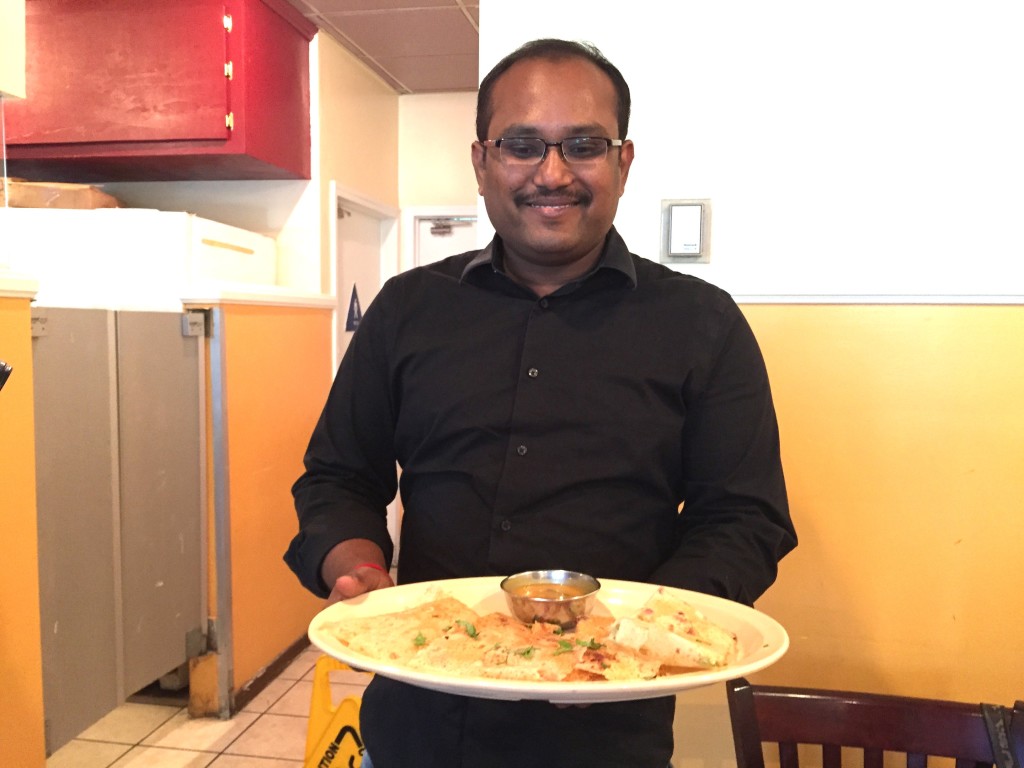
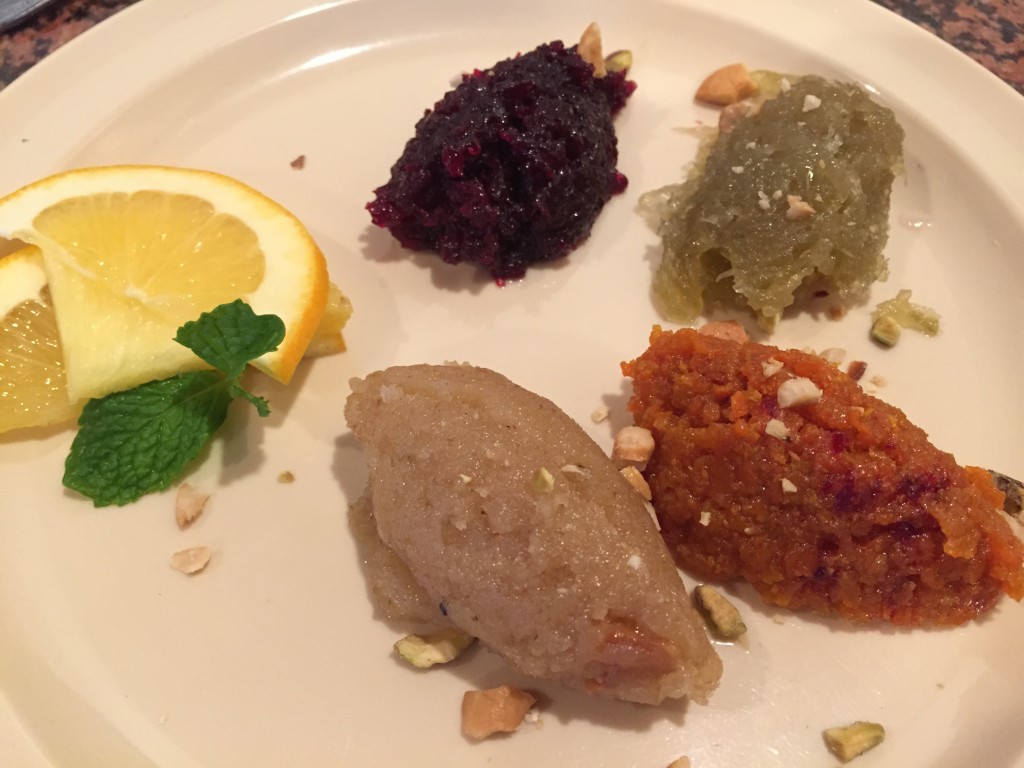
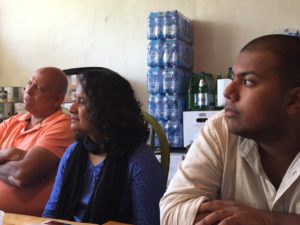

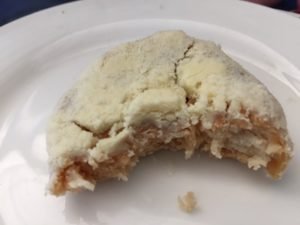
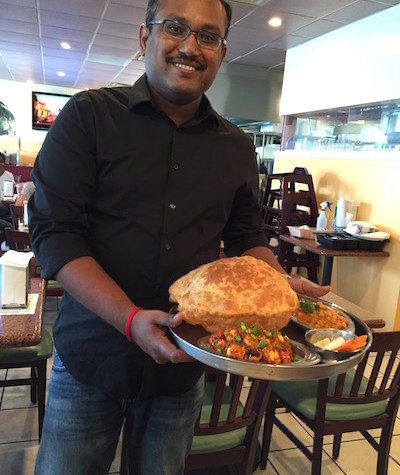











 Gerry Furth-Sides
Gerry Furth-Sides  Barbara Hansen
Barbara Hansen  Chef-owner Alain Cohen
Chef-owner Alain Cohen  Roberta Deen
Roberta Deen  Jose Martinez
Jose Martinez  Nivedita Basu
Nivedita Basu